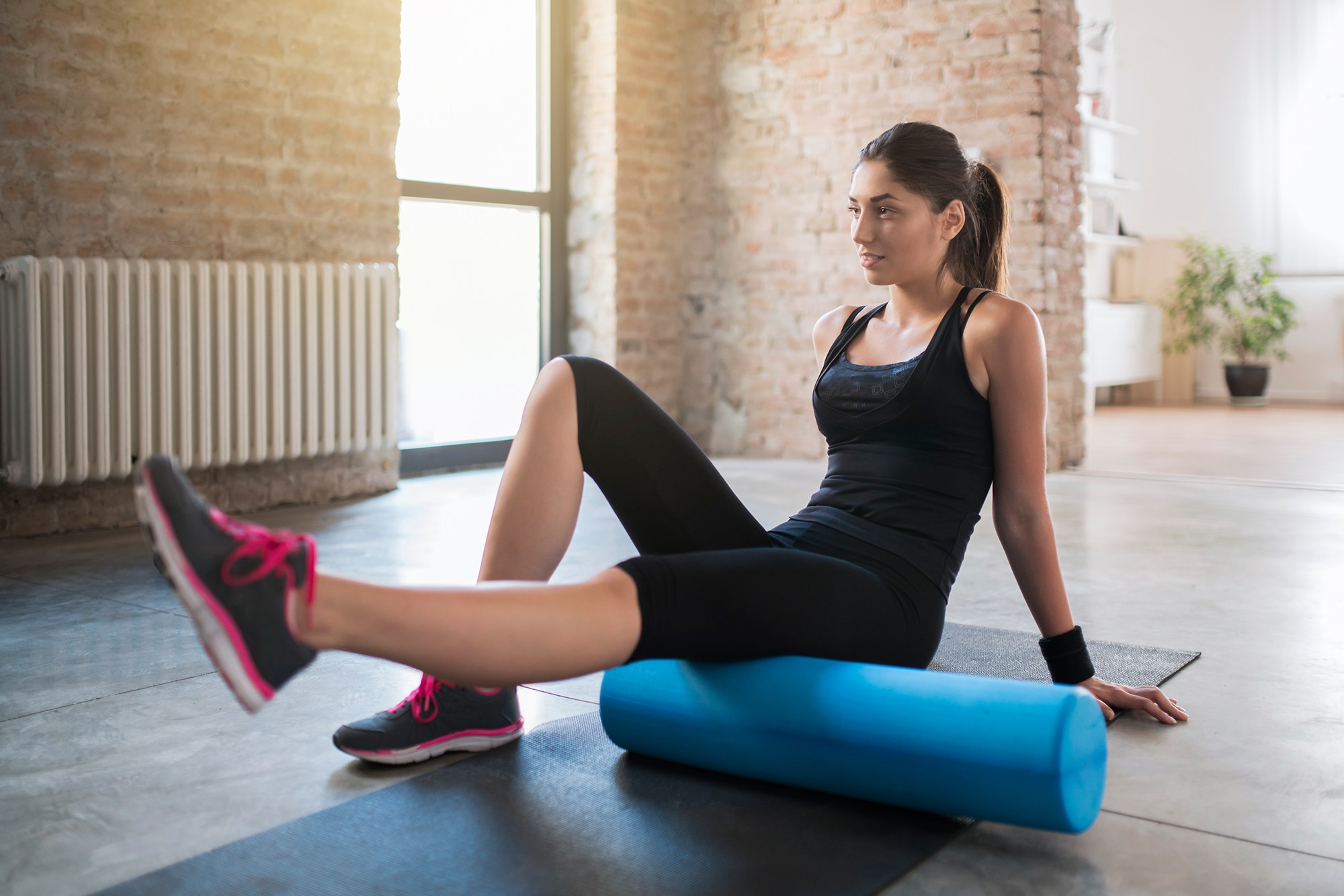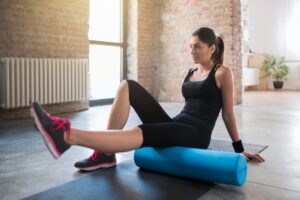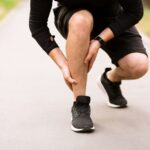
Foam rolling – Is it worth it?
HOW DO FOAM ROLLERS WORKS?
Foam rollers act as your own personal massage therapist. When used correctly, foam rollers can release muscle tightness and manipulate fascia. Fascia is a band/sheet of connective tissue organised in a meshwork of fibres. They are primarily collagen, that sit beneath the skin and separate your muscles muscles and organs. However, in the wonderful world of human anatomy and physiology, foam rollers can also have other notable effects. Let’s dive in shall we..
 BENEFITS
BENEFITS
Massage has a variety of health outcomes such as increased blood flow and muscle length, reduced pain and psychological benefits. However, what does the evidence say about these claims?
BLOOD FLOW
There is no substantial evidence to support massage to promoting blood flow. A proposed benefit of massage is that it increases local blood flow to remove waste products and helps to move inflammatory markers. Evidence found that massage neither improved blood flow or blood lactate levels after high-intensity cycling in the quadriceps. Other studies have found massage to decrease blood flow by squashing blood vessels (mechanical pressure), which were observed in the forearm, and some research has found no observable effect of massage on blood flow or blood lactate at all (neither for or against). If your goal is to improve blood flow with a foam roller then maybe you should think again.
MUSCLE TONE AND VISCOELASTICITY
With the goal of massage to facilitate future force production and enhance quality of movement in muscles and soft tissues, the evidence for this isn’t very clear. However, some athletes and practitioners have reported decreased levels of muscle tone and soreness. There is also some evidence that it may reduce stiffness.
DELAYED ONSET MUSCLE SORENESS (DOMS)
The winner so far is that massage does help with in reducing muscle soreness post-exercise. However, there are time considerations to optimise this which will be covered in the summary of this article. There is also some evidence that using a multi-modal approach such as massage combined with compression garments or massage with stretches also reported decreased levels of soreness.
CELLULAR AND STRUCTURAL EFFECTS
There is evidence to suggest that mechanical stimulus (eg: massage/foam rolling) can facilitate the wildly complicated process called mechanotransduction in our muscles. Alright alright.. that was a mouthful. Apologies. Let’s break that down into a simpler explanation. Mechanotherapy is the result of participating in a therapeutic exercise (eg: foam rolling) to promote beneficial tissue adaptions. It’s a bit like going to the mechanic and getting your car checked. He might bang around, twist, pull, tap certain elements of your engine (the mechanical stimulus’). Mechanotransduction is a part of this process and can be seen in a similar light. It is the process by which cells convert physiological mechanical stimuli (our mechanic in this case) into biochemical responses – to promote repair and remodel injured tissue.
PSYCHOLOGICAL EFFECTS OF FOAM ROLLING
More great findings for massage include reduces in psychological measures including anxiety, tension, stress and depression. There has also been findings to support that massage can increase mood and quality of life measure. This has been shown to be the result of a balance occurring between two parts of our nervous system. The massage has its effect on our parasympathetic nervous system – which is our rest and digest. Or if you’re in to yoga, the yin to the yang.
SUMMARY
Therefore, our trifecta of benefits include positive effects for your neural system, structural elements, and psychology. Therefore, it could be said that there is a benefit to include foam rolling into your recovery strategy.
To learn how to get the most out of your foam rolling for maximum massage impact book in to see one of team members for a consultation to show you how. Feel free to call us on 3352 5116 to make a booking or you can book online.

 BENEFITS
BENEFITS

